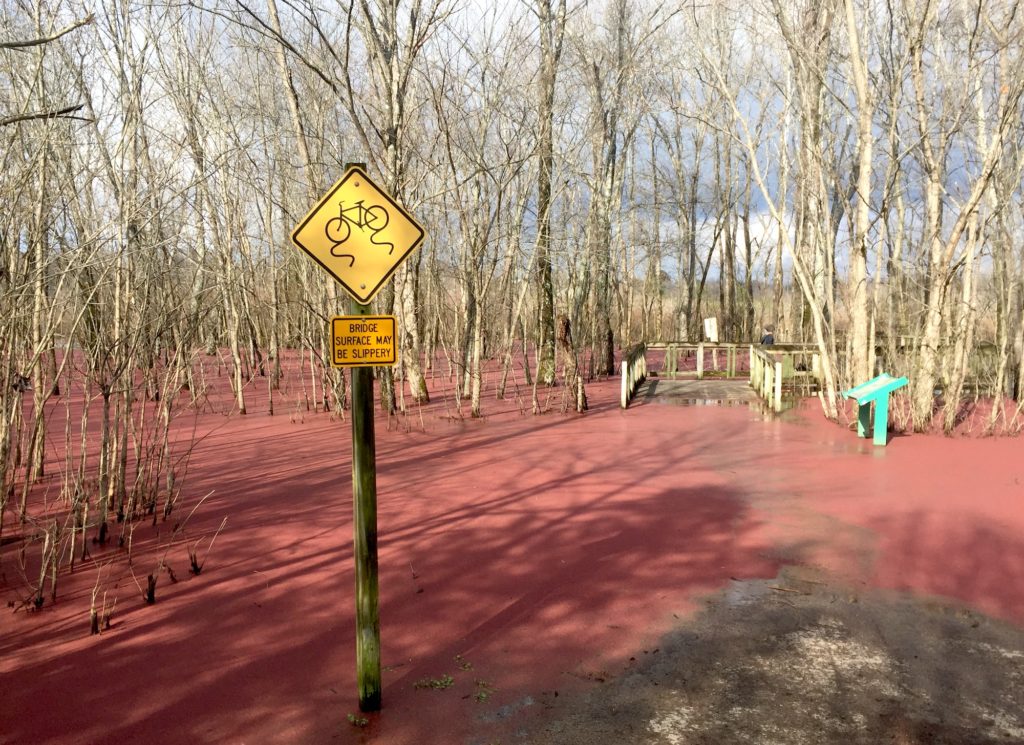
Something has turned the water bright red this year in one of the wetlands within Shelby Bottoms in East Nashville. It has caused photos and discussions to pop up across social media.
The pink phenomenon stands out in the park at a very brown time of the year. And if you look closely, you’ll find the cause is a floating plant known as the Carolina mosquito fern.
“It certainly puts on quite a show because of the density and because of the fact that it turns red,” says Caitlin Elam, a botanist with the Tennessee Department of Environment and Conservation.
Even for Elam, who has known the plant for years, its appearance here is a cause for interest. She says there aren’t many wet areas that could support it, and that the plant has special features, like “hairs” that help it float and cling.
“If you stick your finger in the water and then pull it out, you’ll see how easy it is for that plant to travel,” she says.
 Courtesy of David Withers
Courtesy of David Withers Close up, color variation is visible in the fern at Shelby Bottoms.
There’s a chance that ducks and other waterfowl have carried the plant into Shelby Bottoms over the years.
What’s special this year is that the fern has changed color — similar to leaves in the fall — because of temperature, light, water level and other factors.
In fact, beavers may be contributing. Staff at the Shelby Bottoms Nature Center said the beavers have built a hefty dam nearby that has slowed and deepened the water. In some years, the staff has drained the area — but in 2019, Nashville saw rainfall that ranked among the wettest years on record.
Elam says the color change could become an annual occurrence, and that it doesn’t pose a problem for people or the surrounding environment.
“I’ve been around it a lot personally during fieldwork and have never had a problem,” she said. “But like most unfamiliar plants … don’t eat it.”
To see — but not eat — the red fern in Shelby Bottoms, take the short loop from the nature center and find where the boardwalk crosses the Froggy Bottom Trail. It’s just more than a mile, round trip (map).

